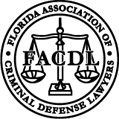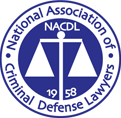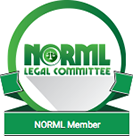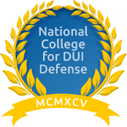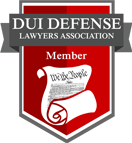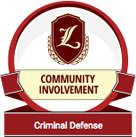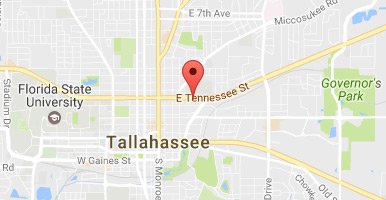- DUI
- Criminal Defense
- Florida DUI
- Traffic Offenses
- Drug Charges
- Marijuana Charges
- Violent Crimes
- Domestic Violence
- Temporary Injunctions
- Weapons Charges
- Theft Crimes
- White Collar Crime
- Juvenile Offenses
- Sex Crimes
- Violation of Probation
- Early Termination of Probation
- Seal or Expunge Criminal Record
- Criminal Appeals
- US Federal Offenses
- Misdemeanor Charges
- Felony Charges
- Co-Defendant Cases
- College Student Defense
- College Student Hearings
- FSU Students
- FAMU Students
- Florida Panhandle Arrests
- Extradition to Florida
- Bench Warrants / Warrants
- Emergency Bond Hearings
- Gambling Charges
- Drone Arrests
- Marsy’s Law
- UAS Infractions
- Introduction of Contraband
- Lying to Police
- Locations
- Case Results
- Our Firm
- Media
- Resources
- Blog
- Contact Us
How DNA Samples Work as Incriminating Evidence
February 6, 2023 Don Pumphrey, Jr. Criminal Defense, Sex Crimes, Violent Crimes Social Share
One of the most common pieces of evidence which can result in criminal charges is the existence of DNA. At the scene of a crime, law enforcement and crime scene specialists are required to collect any possible traces of DNA. The collected DNA can be traced to an individual who has previously given their DNA due to specific crimes they were either arrested or convicted of.
This article will provide information on DNA samples, Florida’s laws on requiring DNA samples, and a recent example case in which a DNA sample resulted in a Florida man’s first-degree murder conviction.
What is a DNA Sample?
DNA is short for deoxyribonucleic acid and is considered the building block of the human body. Every single cell contains DNA, and a person’s specific DNA sample is the same for their blood, saliva, skin tissue, hair, and bone. A person’s DNA code remains the same for the entirety of their life.
Due to the uniqueness of a person’s DNA, it can be used as a powerful source of evidence in a criminal case. With the exception of identical twins, no two people have the same DNA makeup. Meaning that collecting possible DNA samples from a crime scene is imperative in modern-day investigations. In a criminal case such as sexual battery or murder, any possible traces of hair, skin cells, semen, or blood can potentially lead investigators to the offender due to their DNA sample.
When DNA is properly collected, it’s possible to compare the sample with other known samples of suspects who have already been convicted of a crime. This is because most states require individuals convicted of specific crimes to provide DNA evidence. Any known suspect in the criminal offense may be required to provide DNA samples to compare with the crime scene evidence.
In addition, the FBI has a Combined DNA Index System (CODIS), which is a system that contains DNA evidence from profiles submitted by local, state, and federal participating forensic laboratories. According to the FBI’s website, the CODIS database works as follows:
- The DNA profile of a suspected sexual assault perpetrator is developed in swabs from a rape kit;
- The unknown forensic profile attributed to the suspected perpetrator is searched in the CODIS database of convicted offenders and arrestee profiles;
- If the DNA matches a candidate in the Convicted Offender or Arrestee Index, the laboratory assigned will run procedures to determine if it is a confirmed match;
- If the match has been confirmed, the laboratory will obtain the identity of the suspected perpetrator.
In addition, the DNA profile can be searched in the crime scene database called the Forensic Index. When there is a match through the Forensic Index, the laboratory can go through the confirmation procedures which can link two or more crimes together. From here, any of the involved law enforcement agencies can share the obtained information from the DNA sample, which can lead to developing leads and to charging the suspected offender with a crime.
During the investigation of a crime, any person who has been at the scene may be requested to give an elimination sample of DNA. The use of an elimination sample can help compare DNA profiles from the victim and crime scene to the person who has submitted their DNA. This comparison can help law enforcement eliminate possible suspects of a criminal offense.
For example, in a sexual battery case, the victim is advised to complete a rape kit to swab any possible DNA samples from the offender. Law enforcement might request that any person who has had sexual intercourse with the victim within 72 hours of the assault provide a DNA sample to compare with those at the scene of the crime.
Florida’s DNA Database Statute
Florida Statute Section 943.325 explains that DNA databases are important tools in a criminal investigation. The law states that it’s their policy to assist any local, state, or federal law enforcement agencies to identify and detect any individual in a criminal investigation. To do this, there has been a statewide DNA database that includes the DNA samples of any person arrested or convicted of felony offenses and certain misdemeanor offenses.
In addition, Florida Law explains that any match found using the DNA samples from a criminal investigation to the Florida or federal DNA database can be used to find probable cause for the issuance of a warrant to arrest or obtain the DNA sample from the alleged offender.
A “qualifying offender” listed on the Florida DNA database is any person, including both juveniles and adults, who have been:
- Committed to a county jail;
- Committed to or under the supervision of the Department of Corrections, including any person incarcerated in a private correctional institution;
- Committed to or under the supervision of the Department of Juvenile Justice;
- Convicted of any felony offense or attempted felony offense in Florida or another state;
- Convicted of a misdemeanor violation of Stalking, Voyeurism, Obscene and/or lewd materials, Exposing minors to harmful pictures or shows, Traveling to meet a minor or prohibited computer usage/pornography, Videotaping customer’s in a dressing room, or an offense pursuant to a gang-related enhanced penalty which was committed for the purpose of benefiting, promoting, or furthering the interests of a criminal gang; or
- Arrested for any felony offense or attempted felony offense in Florida.
Collection of DNA Samples
Any possible DNA evidence in relation to a criminal offense should be collected by a registered physician, sexual assault nurse examiner, or any other qualified medical examiner. However, it is important for any service provider, crime scene technician, nurse examiner, or other medical aid to be aware of the potential risks that come with collecting, transporting, identifying, and storing DNA evidence.
Any DNA evidence that is not identified initially from the victim or at the crime scene could end up not being collected at all, or it has the possibility of becoming contaminated or degraded. Many factors, including the environment, can impact DNA test results. For example, a DNA sample of a liquid or wet sample could potentially grow bacteria if not stored correctly—which could result in destroying the DNA evidence.
The following is advised in the collection of DNA evidence:
- Laboratory personnel should always wear disposable gloves, use clean instruments, and avoid touching other objects when handling evidence; and
- DNA evidence should be thoroughly air-dried, packaged, and labeled after being collected.
Due to the sensitive nature of DNA evidence in an alleged crime, it is important for medical service providers to contact and work with evidence technicians or crime laboratories to determine any possible offenders.
How to Determine a DNA Match
“The Evaluation of Forensic DNA Evidence” by the Committee on DNA Forensic Science explains that according to the standard procedure, a DNA match is declared in two stages. An experienced forensic scientist can use visual screening to recognize any determining factors which may be considered a match.
By comparing the DNA samples, a match may be indicated with ‘band-shifting’ (a technique used to study gene regulation and determining DNA interactions), which looks to see if the bands in the two lanes shift a small distance in the same direction. Shifting in the opposite direction could instead indicate that there is not a match. However, it is possible that a simple match rule or simple computer program could declare it a match.
An analyst has the ability to override the DNA conclusion based on visual inspection, but they must clearly state the reasons for the override. According to the report by NIH, once a match has been confirmed and declared, it is required to estimate the probability of a match on the assumption that the suspect’s DNA sample and the evidence DNA sample are not from the same source, in order to determine and calculate the likelihood of match probability.
Polymerase chain reaction (PCR) is the most common form of DNA analysis. This type of sample provides investigators with the ability to review DNA samples of limited quality and quantity. Using the PCR process, there are millions of miniscule DNA particle copies created. From there a lab can generate a DNA profile, which can then be compared with any suspect’s DNA profile. Then a statistic is created to determine how often one would expect to find that specific DNA profile in the general population.
Types of DNA Results
After DNA samples have been tested, there are three possible test outcomes: inclusion, exclusion, and inconclusive.
An Inclusion DNA sample means that the DNA profile of the suspect or victim is consistent with the DNA profile from the crime scene evidence. It means it is “included” as a possible form of evidence. Important: although considered Inclusion, the strength of the inclusive DNA sample can depend on the locations of the DNA strand examined and how rare or common the resulting DNA profile would be found in the public population.
An Exclusion DNA sample means that the DNA profile of the suspect or victim is inconsistent with the DNA profile from the crime scene evidence. It means the individual is then “excluded” as the donor of evidence. Important: Just because the DNA sample is marked as excluded, it does not necessarily imply the suspected person’s innocence. If a sexual battery accusation involved a condom, the alleged offender may be “excluded” due to the lack of semen found at the scene of a crime. However, there may be other evidence that links that same person as a suspect.
An inconclusive DNA sample means that the DNA profile of the suspect or victim could neither include nor exclude the individual as the source of biological evidence. Reasons for inconclusive results include any of the following:
- Insufficient quality of DNA sample;
- Insufficient quantity of DNA samples; and/or
- The evidentiary sample includes a mixture from multiple sources.
With advancements in technology such as PCR, it is now much more possible to identify and locate the suspect in a crime that had previously been labeled to have inconclusive results. This is especially true with cold cases, where suspects are either identified or exonerated based on new conclusive DNA evidence.
However, it is important to note that in addition to DNA samples, a criminal trial will still involve the prosecution, defense counsel, and ultimately the jury who will determine a suspect’s innocence or guilt.
Example Case
Nearly four decades after the rape and murder of Mildred Matheny, a jury in West Palm Beach has now determined who was the alleged offender. Richard Lange, 62, has now been convicted of the 1985 case, resulting in a guilty verdict for both sexual battery and first-degree murder.
Law enforcement has now theorized that Matheny—who was 78 years-old at the time and suffered from Alzheimer’s Disease—had wandered from her home in Lake Worth and accepted a ride from a stranger. The victim was later found 30 miles away from her home, moaning and incoherent. Matheny was taken to Martin Memorial Hospital in Stuart but died 11 days later.
According to State Attorney Jo Wilensky, Matheny’s trauma from the sexual assault was so severe that once she was at the hospital, the nurses had to pry her legs apart just to conduct the rape kit. The swabs obtained from the rape kit included a mixture of Matheny’s and the offender’s DNA. However, the rape and murder case ended up going cold.
Decades later, forensic scientist Celynda Sowards with the Palm Beach County Sheriff’s Office attempted to retrieve more information from the DNA profile. In 2021, she collected DNA evidence from the wooden base of the cotton tips which were used to collect the vaginal swab from Matheny.
Although there has been uncertainty in investigations involving degraded DNA samples, crime labs are now working with software that is meant to account for such uncertainties. Sowards used one of these tools to isolate the DNA sample and uploaded it into CODIS. The DNA profile revealed a compelling genetic similarity to Lange, whose DNA was in the system due to a conviction of carrying a concealed weapon without a license in 2006.
However, there was uncertainty in the case since it was not an identical match. Sowards, in addition to other forensic scientists who testified in the trial, said there was not 100% certainty that the DNA was a match to Lange, however, it was more likely to come from him rather than an unknown individual.
“No case should be built on a single piece of evidence,” said Tiffany Roy, the forensic analyst who was called to testify on behalf of the defense. “No matter how powerful and well-regarded the one piece is.”
Roy encouraged the defense counsel to retrieve DNA samples from Lange’s remaining close relatives, which could have had similar DNA profiles that better matched the DNA found from Matheny’s rape kit. Lange’s brother was contacted but refused to provide his own DNA sample.
Lange’s defense argued that while Lange, or his relatives, couldn’t be excluded as a likely source of DNA, it wasn’t an example of due diligence. Defense attorney Scott Skirt claimed that the evidence was not sufficient to convict a man of rape and murder.
“You got a partial hit,” Skier said to jurors on Wednesday. “Partial, partial, partial. Nobody said identical…I could whisper it, and I could yell it. It’s going to be the same every time: The evidence is insufficient to convict.”
However, it only took the jury three hours to deliberate before announcing the guilty verdict. Lange was convicted of both first-degree murder and sexual battery. Circuit Judge Daliah Weiss is set to sentence the defendant on April 4th, 2023.
Working with a Defense Attorney in Tallahassee, Florida
When dealing with a criminal offense, law enforcement and crime scene investigators will search for any possible traces of DNA evidence. Such evidence can be used to trace any convicted felons, and potentially link them to that crime. Despite the technological advances over the last several decades, there are still instances in which DNA evidence may be inconclusive or inadmissible as evidence.
If you or someone you know has been accused of a crime, we highly advise you to reach out to a skilled Tallahassee criminal defense attorney near you. An experienced attorney may advise working with a forensic toxicology expert witness to review any DNA evidence in the case.
Don Pumphrey and his team of attorneys have worked with those accused of criminal offenses all across the state of Florida. Our attorneys will work tirelessly to strategize a strong defense for your case, and to ensure none of your rights are violated during the investigation. To receive a free consultation regarding your case, contact Pumphrey Law Firm at (850) 681-7777 or leave an online message on our website today.



